U.S. Is Becoming More Urban and More Ethnically Diverse, Says Census Bureau
People who checked the "Some Other Race" or racial combination census boxes are now America's second largest ethnic group.

"U.S. population is much more multiracial and more diverse than what we measured in the past," said Nicholas Jones, the Census Bureau's director of race and ethnicity research, in a press release today.
According to last year's census data, whites remain the country's largest racial or ethnic group. About 204.3 million people described themselves as white without also identifying with another group. (Another 31.1 million Americans identified both as white and with another group.) Still, the population identifying as white alone decreased by 8.6 percent since the previous census in 2010.

America's second largest ethnic group? People who either picked multiple racial boxes or checked "Some Other Race." These folks now number 49.9 million—surpassing the African-American population, which now stands at 46.9 million.
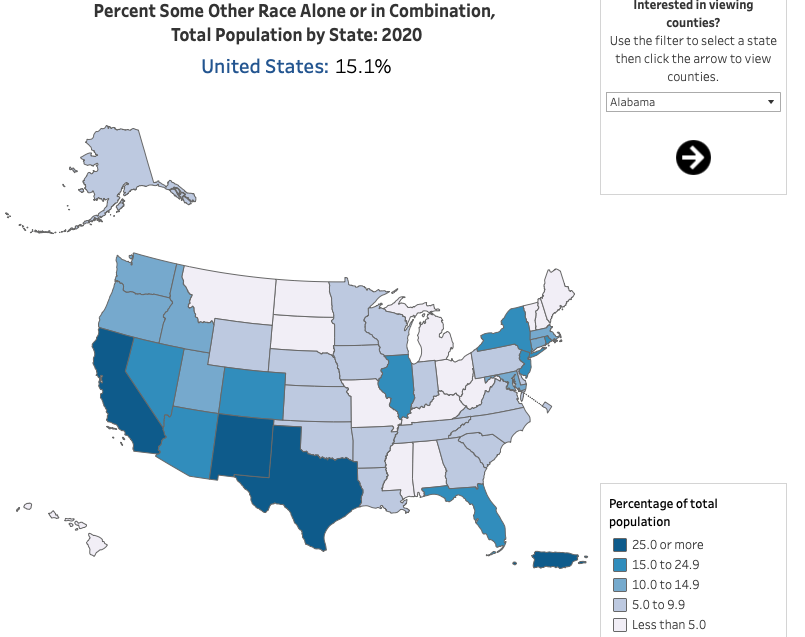
The fact that more Americans are checking multiracial census boxes tracks the steady increase in racial and ethnic group intermarriages over the past 50 years.
America's Hispanic population, which includes people of multiple races, now stands at 62.1 million. About 24 million people described themselves as Asian (either alone or in combination with another group), 9.7 million as American Indian or Alaska Native (alone or in combination), and 1.6 million as Pacific Islanders (alone or in combination).
The total U.S. population grew at the lowest rate since the Great Depression, rising from 308.7 million in 2010 to 331.4 million, a 7.35 percent increase.
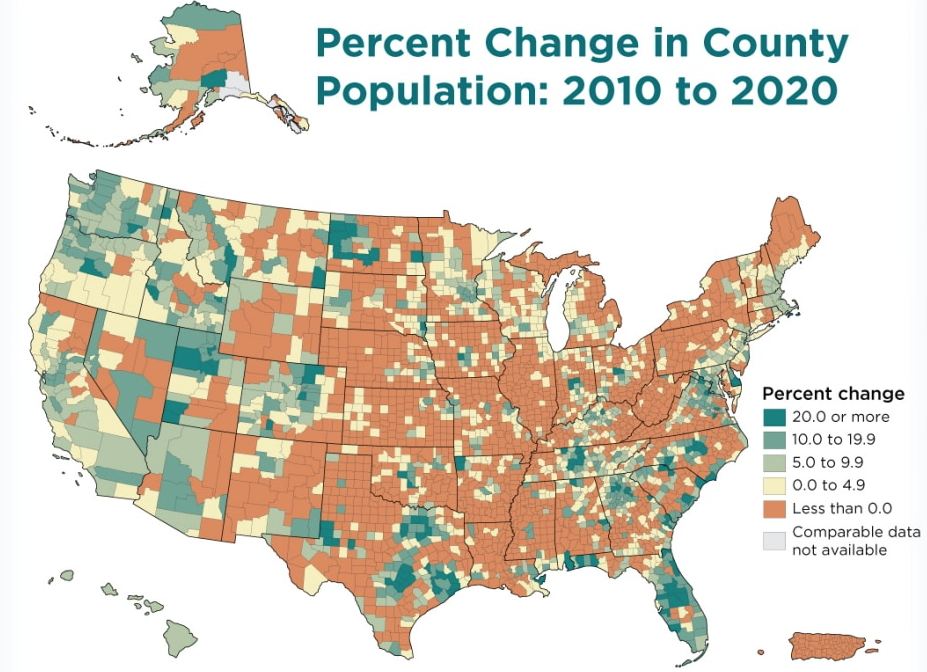
More Americans became urbanites, with 52 percent of the country's countries losing population from 2010 to 2020.
Already-big metropolitan areas tended to get bigger, while smaller cities tended to decline in population.
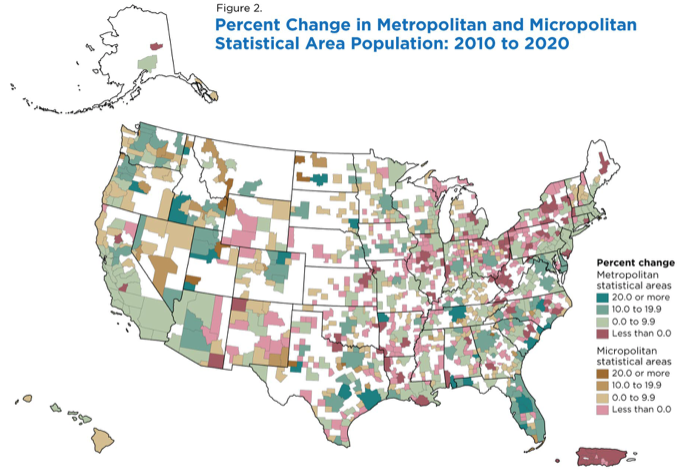
The Census Bureau defines metropolitan areas as counties that contain a city with at least 50,000 residents; micropolitan areas have between 10,000 and 50,000 people. A full 81 percent of U.S. metropolitan areas increased their populations from 2010 to 2020, but only 48 percent of U.S. micropolitan areas grew over the decade.
Three states—West Virginia, Mississippi, and Illinois—lost population, as did Puerto Rico.
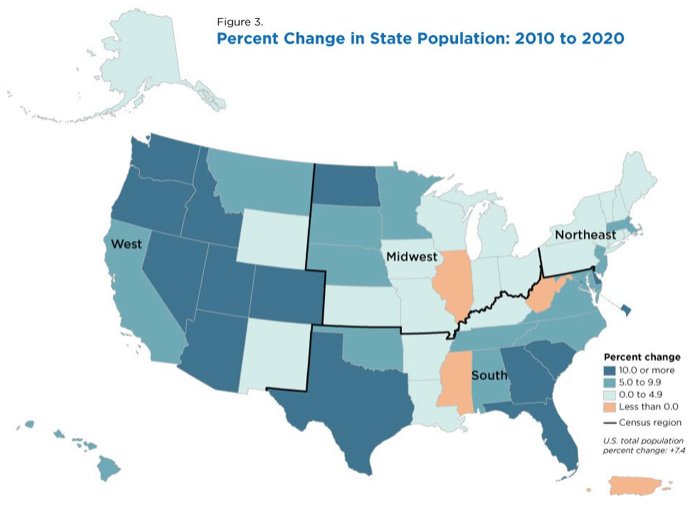
The point of the decennial national census is to figure out how many members of the House of Representatives will be allocated to each state.
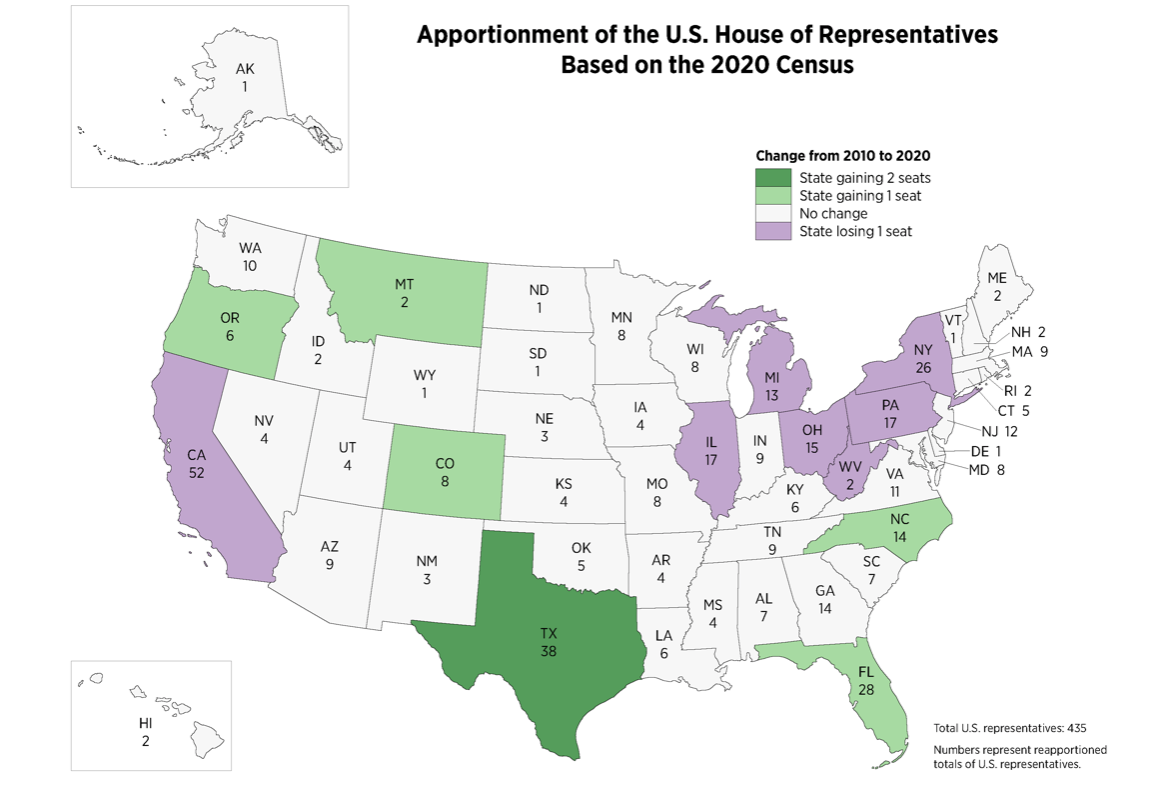
As result of these population shifts, New York, Pennsylvania, West Virginia, Ohio, Michigan, Illinois, and California will each lose one representative. The congressional delegations from Oregon, Montana, Colorado, Florida and North Carolina will each grow by one, and Texas will gain two.


Show Comments (95)